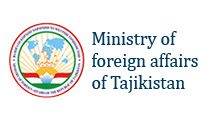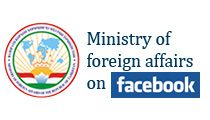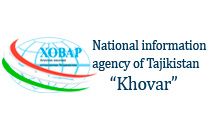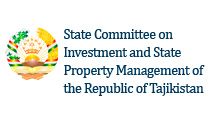The collection consisted of traditional textiles, musical instruments, ancient household utensils, kundal panels and jewellery, among others. These objects – some 67 in total, dating back to the eighteenth and nineteenth centuries – will go on display at The British Museum in the near future.
The project was the initiative of Tajikistan’s Minister of Foreign Affairs, Mr Sirojidin Aslov, following his visit to The British Museum last year. A few months later, representatives of the museum’s Middle East Department, Dr St John Simpson and Dr Zeina Klink-Hoppe, spent a week in Tajikistan, visiting and exploring various historical and archaeological sites. The delegation also included representatives from the UNESCO National Commission under the MFA of Tajikistan and Tajikistan’s National Museum, as well as the then British Ambassador Mr Robin Ord-Smith. They visited museums in Dushanbe and travelled to the ancient town of Takhti Sangin, the temple of Ajina Teppa (the eighth-century Buddhist monastery), the settlement of Hulbuk in Khatlon district, and the ancient settlement of Sarazm in Panjakent district. During the visit, the group gathered significant data on the ethnography of Tajikistan.
The aim of the visit was to establish good relationships and future cooperation in terms of cultural exchange initiatives between The British Museum and Tajikistan’s National Museum. Furthermore, both sides sought to establish further training opportunities for Tajik museum specialists in relevant areas. Accordingly, for the first time in 2015, an expert from Tajikistan’s National Museum has taken part in the British Museum’s International Training Programme to develop his skills and expertise.
The Tajikistan Embassy in London and The British Museum have already worked together over the past five years. In 2010, the Embassy conducted negotiations with The British Museum on the possibility of creating replicas of the most valuable items of the Oxus Treasure for Tajikistan. The British Museum agreed to this, but only to make replicas of some of these items, because the others are too fragile to handle.
Found in 1877 near the Oxus River (the ancient name of the Amudarya River, part of modern Tajikistan’s territory), the Oxus Treasure is the most important surviving collection of Achaemenid Persian metal work. Formed under Cyrus the Great (559-530BC), the Achaemenid Empire was when Persian control stretched from Egypt and the Aegean to Afghanistan and the Indus Valley. The Oxus Treasure is a collection of about 170 objects, dating mainly from the fourth and fifth centuries BC, including vessels, armlets, seals, rings and coins.
In 2013, following collaboration between the Embassy and the Keeper of the Middle East Department, Jonathan N. Tubb, the amazing golden replicas of these historical artefacts were presented to the Embassy by The British Museum, ready to go on display at the new Tajikistan National Museum.
Newly built and officially opened by the Government in 2013, the Tajikistan National Museum displays artefacts and authentic evidence of the country’s rich cultural heritage and ancient history, reaching as far back as times of Zoroastrian philosophy some 3,500 years ago. Among other unique and priceless items, there is a 12-metre long and 5.5 ton reclining Buddha statue, which was discovered in an ancient Buddhist town in western Tajikistan, and is considered to be one of the largest Buddha sculptures in the world.
Cooperation between the Tajikistan Embassy in London and The British Museum is on-going and will continue well into the future. The Embassy will continue to enable cooperation going forward between Tajikistan’s National Museum and The British Museum, exchanging knowledge and skills, as well as several further projects of bilateral interaction.
We expect that this exhibition of ‘never-before-seen’ objects will fuel interest in Tajikistan’s heritage and rich culture among the many millions of British Museum visitors. Visitors will be able to see a collection of fascinating ethnographic artefacts, including various suzanis (embroidered, decorative tribal textiles) from different regions of Tajikistan. Their unique patterns and intricate designs are fascinating cultural artworks that represent Tajik identity. There will be beautiful examples of zarduzi, which is embroidery on original clothes, where the metallic threads were originally wrapped in real gold or silver, and quroq, which are decorative examples of national handicrafts. Furthermore, the collection includes toqi (traditional Tajik dresses and skullcaps) that differ from region to region in terms of colour, embroidered pattern and style. Equally important, the collection of traditional jewellery includes forehead accessories and necklaces, earrings and bracelets, as well as tumortaponcha (amulet cases). These and many other artefacts including musical instruments, traditional kitchen utensils, kundal (ornamental paintings) and miniatures will allow viewers to appreciate the richness of Tajik culture and offer new insights into the country and its traditions.
I would like to express my sincere appreciation to The British Museum Directorate and its Department of the Middle East for the support and cooperation that has been extended to the Embassy.









